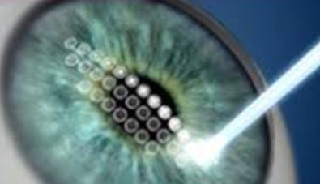
What is Phototherapeutic keratectomy (PTK)?
· PTK is a laser based minor surgery used to treat scars in the cornea and regularize the corneal surface.
· It can treat hereditary corneal dystrophies, remove corneal nodules, and help in recurrent corneal erosion syndrome, a painful condition in which the surface of the cornea frequently breaks-down.
· PTK uses an excimer laser which precisely resurfaces the cornea in a micron-by-micron as controlled by your surgeon.
PTK can also help to improve your vision by:
· Removing scars in the cornea
· Regularizing the surface of the cornea
· You will still need to wear glasses or contact lenses after PTK which usually can be updated 4-8 weeks after surgery
What are the risks of PTK?

· During the initial few days, you will have stinging and light sensitivity.
· As the surface heals, you will be required to place anti-inflammatory drops and antibiotic drops to reduce the risk of haze in the cornea and infection.
· You will experience dryness of the surface and will need to use frequent tears for the first few months after surgery
· You can experience glare and halos in your vision as the surface of the cornea regularizes. These symptoms usually last 1-3 months depending on your healing.
What are the limitations?
· Although PTK is a permanent surgery, scarring or irregularities in the cornea may sometimes return .
· PTK can treat the surface of the cornea and cannot remove deep corneal scars which may require the use of a specialty contact lens or may require corneal transplantation.
· Unlike with LASIK and PRK (which are used in healthy eyes), PTK cannot treat myopia, hyperopia, or astigmatism. PTK does not reduce the need for glasses and contacts. In some cases, PTK can be followed by PRK to treat the residual refractive error.
